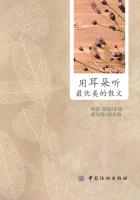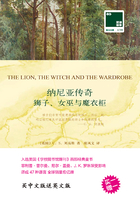Before the transition period between the Qing and Ming dynasties (mid-17th century), Muslims in China belonged to the Sunni sect, except the Tajiks who were of the Shiah sect and a very small number of the Uighurs who believed in Ithna Ashariyyah. As for the schools they followed, except a few in Xinjiang following Shafi"iyyah, the rest were of Hanafiyyah. In the transition period between Ming and Qing dynasties, as Sufism was introduced into China, many independent sects and Menhuans emerged one after another and grew rapidly, among which three sects: Qadim, Ikhwan and Xidaotang, and four Menhuans: Kubrawiyyah, Qadiriyyah, Khufiyyah and Jahriyyah were of greatest influence.
Qadim, which means “traditional sect”, is a sect of Islam in China that has spread early and widely and has more followers and greater influence than any other sect. As it adheres to the teachings, thoughts and ceremonies that have been practiced forgenerations since the Tang and Song dynasties, so it was named Qadim. Qadim is of Sunni. It bases its religious thoughts upon the Holy Qur"an and strictly abides by the “Six Beliefs”, “Eight Ultimate Principles” and traditional ceremonies and proprieties. It holds an attitude of respect and tolerance towards others sects and schools, and coexists in peace with other religions prevailing in China. Having undergone a long process of development in Song, Yuan, Ming and Qing dynasties, Qadim has become the mainstream sect of Islam in China, being unique in its own style. Qadim was influence by Shiah to some extent although it has always walked its own path. It takes Tariqah (austerity) practiced by Sufism as Tatawwu, does not worship saints and their mausoleums but is not firmly opposed to it on the other hand. On the aspect of its etiquette and customs, there are some things borrowed from the culture of the Hans.
Ikhwan, which literally means brotherhood, is also called Ahl al-Sunni (a sect abiding by the Holy Qur"an) and most other sects call it the New Sect. It was established by Ma Wanfu, a well-known Dongxiang Imam in Hezhou (now the Linxia Hui Prefecture in Gansu), at the end of the 19th century. In the short time of some tens of years, it has quickly developed into a new sect covering Gansu, Ningxia and Qinghai. It abides by thedoctrine of Sunni and follows the teaching of the Hanafiyyah School, maintaining that all the etiquettes and ceremonies that are not in line with the Holy Qur"an and Hadith should be abolished. It is against mausoleum and murshid (guide) worship, and advocates that preaching and Da"wah should be done in Chinese.
Xidaotang also previously called Jinxingtang. Basing its doctrine upon the works of well-known Chinese Islamic scholars such as Liu Zhi and others, it is also called Hanxuepai (school of Chinese culture)? It believes that only by combining with Chinese culture could Islam be developed in China. Xidaotang was established by Ma Qixi (1857-1914 A.D.) in a small town called Jiucheng in Lintan County, Gansu Province. It abides by the doctrine of Sunni and follows the teaching of Hanafiyyah, and takes the works of Liu Zhi and others as its Da"wah source. It attaches great importance to Mawlid al-Nabiy (birthday of Prophet Muhammad and also the day when he passed away) and the anniversary of the death of Ma Qixi, founder of Xidaotang, but did not build any mausoleums for the murshids (guide) after him. It practices murshid-domination system with the murshid as both religious head and the manager of the followers‘ secular life. Its followers are of two categories: individual householdsand collective households. The individual households are scattered all over the Northwest of China, independent on economy and living, but they can seek help from Xidaotang when they are in need. The collective households are concentrated inthe home of Xidaotang located in Lintan County and engagingin business on farming, forestry, animal husbandry and commerce collectively. It calls for pursuing knowledge, encouraging all school-age boys and girls within Xidaotang itself and of all other nationalities of the locale to attend school, and selects the top students within Xidaotang to receive secondary and high education, so a considerable number of its followers are welleducated. Xidaotang is a religious sect and a special economic community as well.
Menhuan is a general term for all the Sufist schools and their branches prevailing in inland China. Sufism was introduced to Xinjiang from Bukhara and Samarkand in Central Asia in the17th century, and separated into two sects: Baishan (white mountain) and Heishan (black mountain)? All the Sufi schools and branches in Xinjiang are generally called Ishan. Since the18th century, Sufi schools such as Kubrawiyyah, Qadiriyyah, Khufiyyah and Jahriyyah (called Four Menhuans by Muslims) were introduced into Gansu, Ningxia and Qinghai successively. Influenced by traditional Chinese culture, some smaller branches such as Mufti, Dawantou, Dagongbei, Huasi, Guanchuan came into being. These Sufi schools and branches that prevailed in the areas of the Huis did not have a common name at the very beginning, so some of them continued to use the name of the sect from which they originated, such as Kubrawiyyah and Qadiriyyah; some were named according to the tone of their chanting Dhikr (praise to Allah), such as Khufiyyah and Jahriyyah; some were named after the place where the mausoleum of the founder or mosque are located, such as Bijiachang and Baizhuang; some were named after the family name of thefounder, such as Xianmen and Zhangmen; some were given the name for their wide coverage and grand construction of the mausoleums, such as Dagongbei (grand mausoleum) and Huasi (splendid mosque); some were named with the word on the stele bestowed by the local government, such as Mufti.















